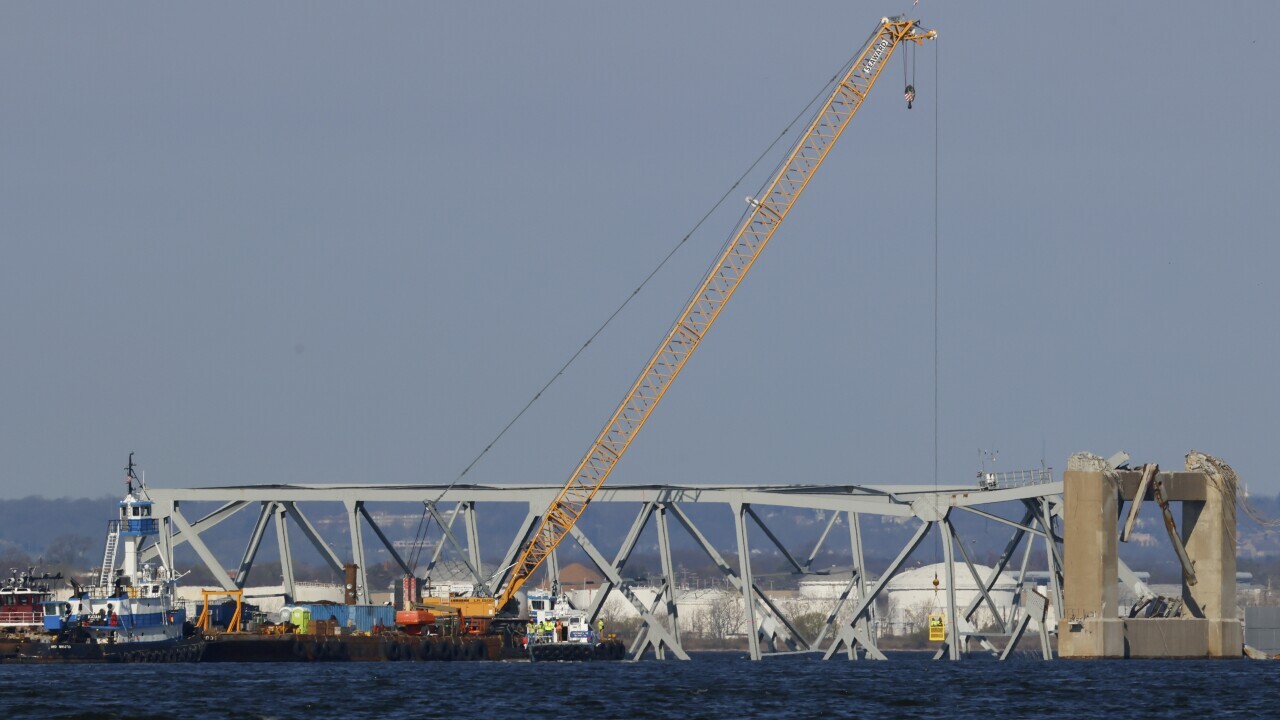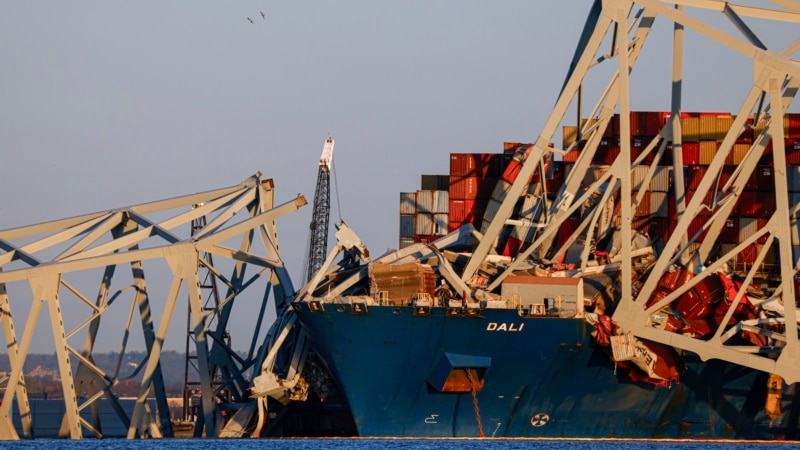Teams of engineers are currently engaged in the intricate process of cutting and lifting the initial section of twisted steel from the collapsed Francis Scott Key Bridge in Maryland. The bridge collapsed into the Patapsco River earlier this week following a collision with a massive cargo ship, causing a significant disruption.
Sparks were observed emanating from a segment of bent and crumpled steel on Saturday afternoon as efforts to remove a portion of the fallen structure commenced, confirmed by the U.S. Coast Guard. Coast Guard Rear Adm. Shannon Gilreath stated that crews are meticulously measuring and cutting the steel from the damaged bridge before attaching straps for lifting onto a barge to be floated away.
Numerous resources are deployed on-site, including seven floating cranes, ten tugboats, nine barges, eight salvage vessels, and five Coast Guard boats, all situated in the water southeast of Baltimore.

US Bridge Collapse (Credits: ABC Action News)
The complexity of each movement impacts subsequent steps and determines the duration required for debris removal and the eventual reopening of the ship channel and the blocked Port of Baltimore, noted Maryland Governor Wes Moore.
Expressing the significance of the ongoing operation, Governor Moore emphasized the complexity of the process and the critical nature of the initial movement of the bridge wreckage. Meanwhile, at the Tradepoint Atlantic terminal near the wreckage site, locals like Randy Lichtenberg observed the scene, reflecting on the challenging nature of the task ahead and the iconic loss to the Baltimore skyline.
Efforts are focused on establishing a smaller auxiliary ship channel to facilitate the movement of tugboats and smaller barges. Stabilizing the site is imperative to enable divers to continue the search for four missing workers presumed dead. Investigations into the cause of the collision and collapse, which appear to be accidental following the ship’s power loss, are ongoing.
Amid concerns about potential pollution, Adam Ortiz of the Environmental Protection Agency assured that there were no indications of hazardous materials in the water. Plans for rebuilding the bridge are underway, with Maryland transportation officials exploring innovative designs and materials to expedite the process, which is anticipated to take years. President Joe Biden’s administration has allocated $60 million in immediate aid, pledging full federal support for the reconstruction effort.
While ship traffic at the Port of Baltimore remains suspended, truck processing at marine terminals continues. The closure of the bridge, which served 30,000 vehicles daily, and the disruption to port operations will have widespread economic ramifications affecting dockworkers, commuters, and U.S. consumers, leading to potential shipping delays with the port handling significant volumes of cars and farm equipment.























